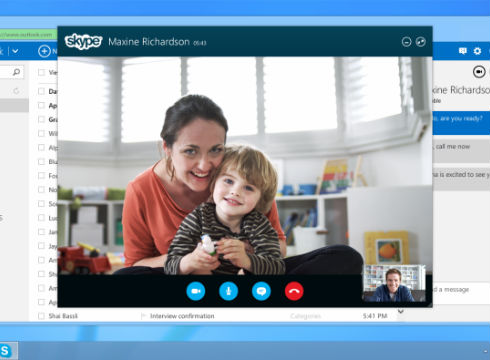

The launch of the new video game and multimedia console, the Xbox One, on 21 May is being hailed by Microsoft as not just a gaming upgrade.
Shrouded in an angular black enclosure, and joined by the updated versions of the Xbox controller and Kinect sensor, the new hardware is of course capable of generating the fast, fluid and high-fidelity graphics that gamers demand.
But video games are just part of the Xbox One story.
In a telling move, Microsoft officials first demonstrated the new console’s Kinect-enabled personalisation features and live TV viewing capabilities, followed shortly thereafter by entertainment search, Web browsing and video-calling capabilities. Microsoft is making it clear that while consumers may come for the games, the company wants them to stick around for the services, namely Skype and Bing.
Tony Bates, CEO of Microsoft’s Skype division, noted in a 22 May blog post that Xbox One is a big step in an effort to “re-humanise communications” and popularise video calls in the living room. “For the very first time, Skype for Xbox One lets you enjoy your Xbox games, apps and live TV with friends and family as if they were right there with you in the living room, all through features such as group video calling and Snap,” he wrote.
Bing will also play a huge role in the new Xbox experience, according to Microsoft’s Frank X. Shaw, corporate vice president of corporate communications.
When you search by voice for movies, TV shows or music, Bing is the service providing the instant responses. That experience is going to get a whole lot better with Xbox One,” Shaw wrote in The Official Microsoft Blog.
Combined with the new multitasking capabilities made possible by snap mode, Shaw envisions that users will engage with media rather than just consume it. Instead of watching a movie, for instance, they can delve into its production without reaching for a tablet, smartphone or notebook PC.
“Now IE with Bing as my home page is running next to the movie I’m watching. Finding information about the cast is, yes, just a snap,” wrote Shaw.
Anchoring these new experiences will be a massively upgraded Xbox Live cloud infrastructure.
“When we begin selling Xbox One, we’ll have 300,000 servers delivering the service,” wrote Shaw, reiterating Marc Whitten’s disclosure during the Xbox One reveal.
Currently, 15,000 servers power Xbox Live.
Delivering fluid, near-instant cloud-based services requires some major investments on the back end. “That’s how you deliver a highly scalable, highly available service to tens of millions of simultaneous users, and provide the kind of split-second switching between games, television and entertainment apps that we witnessed yesterday,” Shaw wrote.
Are you a cloud pro? Try our quiz!
Originally published on eWeek.
Pebble creator launches two new PebbleOS-based smartwatches with 30-day battery life, e-ink screens after OS…
Amazon loses appeal in Luxembourg's administrative court over 746m euro GDPR fine related to use…
Nvidia, xAI to participate in project backed by BlackRock, Microsoft to invest $100bn in AI…
Google agrees to pay $28m to settle claims it offered higher pay and more opportunities…
Chinese social media giant Tencent triples capital expenditure on AI data centres and other areas…
EU gives Apple demands for third-party developer access to iOS features and greater responsiveness in…